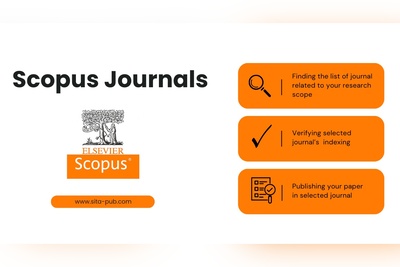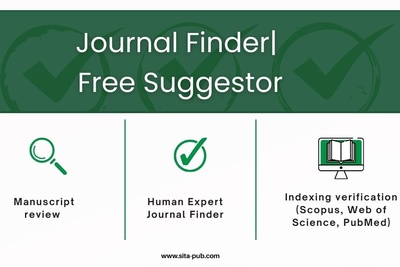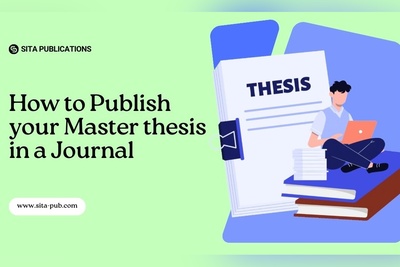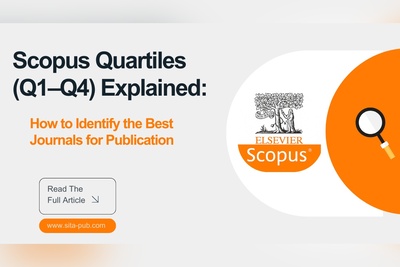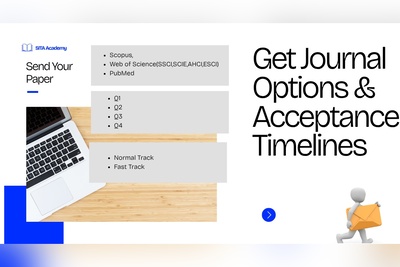Professional Research Paper Formatting to Meet Journal Guidelines
Professional guide to research paper formatting for journal submission. Learn guidelines, importance, steps.
- What Is Research Paper Formatting According to Journal Guidelines?
- Why Do Journals Care So Much About Formatting?
- Which Sections of a Research Paper Require Formatting?
- How to Understand and Follow Journal Guidelines
- The Importance of Formatting Before Submission
- Professional Research Paper Formatting Services: Why You May Need Them
- Professional Research Paper Formatting at SITA Academy
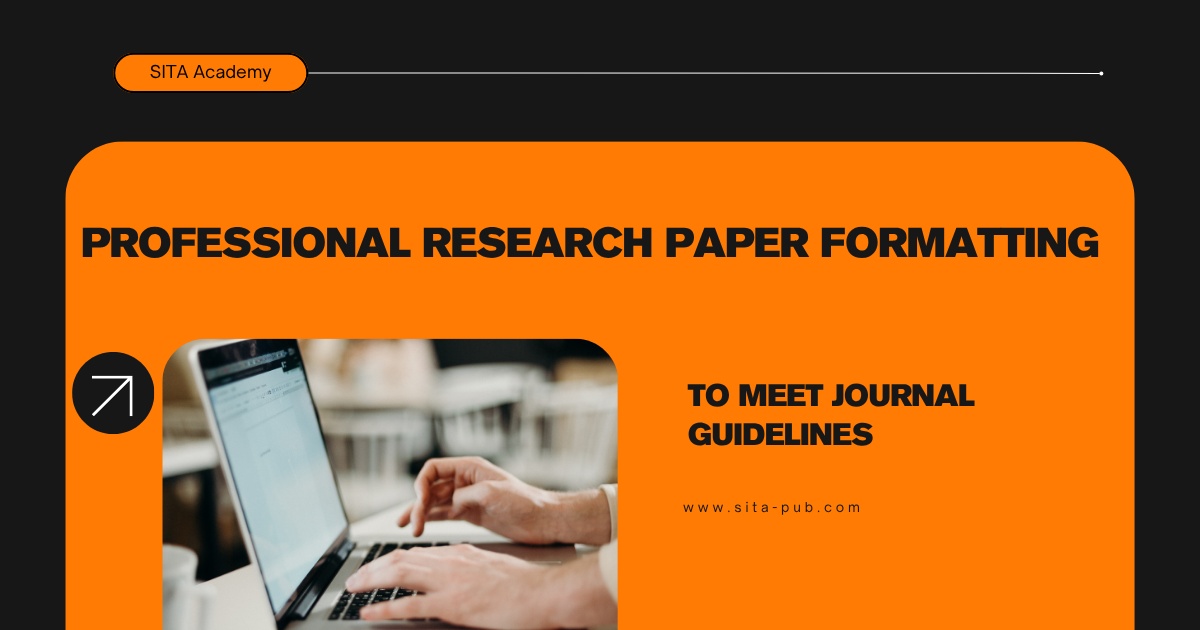
Publishing a research paper is not only about conducting good research; it is also about presenting your work in the exact format required by the target journal. Even a high-quality paper can face desk rejection if it does not follow the journal’s formatting guidelines.
In academic publishing, formatting is not an optional step—it is a requirement that reflects the professionalism, clarity, and credibility of your research.
In this comprehensive guide, we will explain:
What research paper formatting means
Why journals require specific formatting
Which sections of your paper need formatting
How to understand journal guidelines
The importance of proper formatting before submission
How professional formatting services—like SITA Academy—help researchers publish successfully
Let’s begin.
What Is Research Paper Formatting According to Journal Guidelines?
Research paper formatting is the process of organizing and styling your manuscript according to the technical, structural, and stylistic requirements of a specific journal.
Every journal has its own rules for:
Structure
Font type and size
Line spacing
Headings and subheadings
Abstract format
Reference style
Figure and table layout
Cover letter format
Word limits
Page layout
Ethics statements

The purpose is to ensure:
Consistency among all published articles
Clarity for readers
Efficiency for reviewers
Professional presentation of research
If a manuscript is not formatted properly, the editorial team often rejects it before peer review, known as desk rejection.
Why Do Journals Care So Much About Formatting?
Many researchers wonder: Why do journals reject papers for formatting issues before even reading the research?
Here are the main reasons:
1. Efficiency for Editors and Reviewers
Reviewers receive hundreds of manuscripts. Standard formatting helps them read and assess submissions easily.
2. Consistency Across Publications
Journals want all published papers to look uniform and follow the same style.
3. Compliance and Quality Control
Proper formatting shows the author understands academic publishing standards.
4. Avoiding Technical Issues
Poorly formatted tables, figures, or references create problems during layout and online publication.
5. Reducing Misinterpretation
Clear formatting ensures that results, formulas, and figures are interpreted correctly.
In short: Formatting protects quality.

Which Sections of a Research Paper Require Formatting?
Every part of your manuscript needs to be aligned with the journal’s template. Below are the essential sections and what journals expect.
1. Title Page Formatting
The title page often requires:
Full title in a specific style (sentence case or title case)
Author names and affiliations
Corresponding author information
Email and ORCID ID
Running head (short title), if required
Each journal has its own rules.
2. Abstract Formatting
Journals may require:
Structured abstract (Background, Methods, Results, Conclusion)
Or unstructured abstract
Word limit (usually 150–300 words)
Specific keywords
Sending an abstract in the wrong format leads to instant rejection.
3. Main Body Formatting
Key elements include:
Font type (Times New Roman, Arial, etc.)
Font size (typically 12 pt)
Line spacing (single, 1.5, or double)
Heading levels (H1, H2, H3)
Consistent paragraph styling
Correct section order (Intro → Methods → Results → Discussion → Conclusion)
4. References and Citation Style
One of the most common reasons for rejection is incorrect referencing.
Journals may require:
APA
MLA
Harvard
Vancouver
IEEE
Chicago
Or a journal-specific citation format.
The reference section must be:
Alphabetized or numbered
Properly punctuated
Consistent
Linked with in-text citations
5. Tables and Figures Format
Journals may require:
Specific numbering (Table 1, Table 2…)
Title above or below the table
Figure resolution (300–600 DPI)
PNG, TIFF, or JPEG formats
Separate submission for figures
Permissions for reused images
Incorrect figure format often delays the publication process.
6. Ethics, Funding, and Conflict Statements
Most journals require structured declarations:
Ethics approval
Consent to participate
Consent for publication
Funding
Conflict of interest
Availability of data
Each must follow the journal’s wording and structure.
7. Cover Letter Formatting
Some journals require a cover letter addressed to the editor, including:
Paper title
Novelty statement
Conflict of interest declaration
Confirmation that the paper is not under review elsewhere
How to Understand and Follow Journal Guidelines
Understanding a journal’s instructions may feel overwhelming, especially for new researchers. Journals provide extremely detailed guidelines—sometimes 10–20 pages long.
Here’s how to navigate them effectively:
Visit the Journal Website
Look for sections such as:
“For Authors”
“Submission Guidelines”
“Instructions for Authors”
“Manuscript Template”
“Author Checklist”
2. Download the Manuscript Template
Most journals provide:
Word or LaTeX templates
Reference style files
Figure formatting specifications
Start your writing inside the template for best alignment.
3. Check Recently Published Articles
This is one of the most effective methods.
Ask yourself:
How are the sections structured?
What is the style of tables and figures?
How long is the abstract?
What tone is used?
Replicating the journal’s style increases your acceptance chance.
4. Review the Journal Scope
Make sure your paper aligns with:
Field
Methodologies
Study design
Themes/topics
Even perfectly formatted papers are rejected if out of scope.
5. Use Checklist Before Submitting
Many journals provide an “Author Checklist” to verify:
Word count
Abstract structure
Figure size
References formatting
Ethical statements
Use it before submission to avoid desk rejection.
The Importance of Formatting Before Submission
Formatting your research paper properly is not just a formality—it significantly affects your publication outcome.
1. Increases Acceptance Chance
Editors are more likely to send a well-formatted paper to peer review.
2. Saves Time in the Review Process
Reviewers spend less time asking for corrections.
3. Avoids Desk Rejection
Improper formatting is the #1 reason many papers are rejected before review.
4. Improves Professional Presentation
It shows you are a serious researcher committed to academic standards.
5. Increases Credibility
Well-structured papers are easier to read and more convincing.
6. Reduces Author Stress
Following guidelines prevents last-minute editing during revision rounds.

Professional Research Paper Formatting Services: Why You May Need Them
Most researchers are experts in their field—but not necessarily in formatting papers for publication.
Formatting involves:
Precise technical adjustments
Style consistency
Detailed reading of journal guidelines
Correct application of citation styles
Knowledge of submission systems
It can take 8–20 hours for a single paper.
Professional formatting services help:
Save time
Reduce errors
Increase acceptance
Ensure compliance
Optimize layout
Improve readability
This is especially beneficial for:
International students
Non-native English speakers
Researchers with deadlines
Busy academics and clinicians
New authors unfamiliar with publishing rules
Professional Research Paper Formatting at SITA Academy
At SITA Academy, we specialize in preparing research papers for successful publication in:
Scopus
Web of Science (SCI, SCIE, SSCI, ESCI)
PubMed
Q1–Q4 journals
What Our Formatting Service Includes
Formatting the entire manuscript according to the selected journal
Applying correct fonts, spacing, margins
Structuring sections based on journal requirements
Correcting heading formats (H1, H2, H3…)
Formatting tables, figures, and captions
Applying the correct reference style
Creating or revising the cover letter
Adding required declarations (ethics, funding, conflict of interest)
Checking completeness of submission files
Preparing for submission on systems like ScholarOne, Editorial Manager, etc.
Why Authors Choose SITA Academy
We follow the guideline exactly as provided
We work with journal-specific templates
We ensure your paper passes editorial screening
We reduce the chances of immediate rejection
Our team includes experienced academic editors
We support authors until successful submission
Whether you are preparing a medical, engineering, social science, or humanities paper—our team ensures your manuscript meets every detail of the journal’s requirements.
Final Thoughts
Proper formatting is a crucial part of academic publishing. While the research itself is the core of your work, poor presentation can lead to unnecessary rejection. By understanding journal guidelines, structuring your paper correctly, and using professional formatting support when needed, you significantly increase your chances of successful publication.
If you want your paper to be formatted professionally, accurately, and according to journal guidelines, SITA Academy is ready to help.
Verified Contact Channels
If you have any questions, inquiries, or would like to learn more about our services, please don't hesitate to reach out to us. Our dedicated team is ready to assist you.







